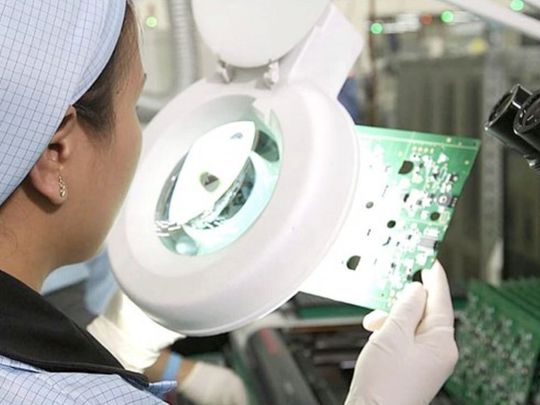
Manila: The Philippine electronics export revenues hit a record 12.9% jump despite the pandemic-related curbs, according to an industry report.
The Semiconductor and Electronics Industries in the Philippines Foundation Inc. (Seipi) on Wednesday said the Asian country’s semiconductor and electronics sector shipped $45.92 billion worth of goods in 2021.
2.2 million industry workers, top dollar earner
The Philippines is home to more than 920 electronics companies, who together account more than 60% of the country’s export receipts.
Seipi records membership of 261 electronis manufacturing firms in the country. The industry altogether employs an estimated 2.2 million workers.
$ 45.92 billion
value of electronics and semiconductor exports of the Philippines in 2021, according to industry data.Seipi broke its all-time export revenues every year from 2017 to 2019, until the pandemic stalled the rise in 2020 with due to supply chain disruptions. Seipi recorded $36.5 billion worth of exports in 2017, followed by $37.57 billion in 2018, and then by $43.32 billion in 2019.
The 2020 lockdowns disrupted the industry’s pre-pandemic rise, posing record earnings for three years in a row. In 2020, earnings dropped by around 6% to $40.67 billion. The record revenues in 2021 means electronics now account for more than 60% of the country’s total export receipts of $74.64 billion in 2021.
Spike in demand
A key driver for the upswing in demand are electronic components used in telemedicine, work-from-home arrangements, and artificial intelligence, among others, Seipi president Danilo Lachica explained to local media. This year, the industry group expects export revenues to grow by 10% — though the country could still do much more.

Most of the electronics manufacturing companies in the country are within the Philippine Economic Zone Authority (PEZA) locations. A key challenge is its ability to attract as much new investments as its peers in Southeast Asia.
After Duterte’s six-year watch ends on June 30, 2022, the industry group hopes the next administration would give the PEZA greater room to draw foreign direct investments.
The industry is asking for tweaks in the Corporate Recovery and Tax Incentives for Enterprises Act (also known as CREATE Law), passed in March 2021.
Industry proposal to ‘tweak’ CREATE law
The CREATE law reduced corporate income tax, rationalised tax incentives and set a threshold for investments that can be approved by investment promotion agencies (IPAs) like PEZA.

While the CREATE Act cuts the corporate income tax from 30% to 25%, it requires exporters to surrender their fiscal incentives within 10 years.
Under the new law, PEZA and other such "investment-promotion agencies" can only approve a project worth Php1 billion ($19.6 million) or less. Investments with higher value need to be approved by the Fiscal Incentives Review Board, headed by the Department of Finance.
Seipi supports moves to raise the Php1-billion threshold to give Peza “more room”, Seipi president Danilo Lachica said. He added that while raising the limit would be “a good first step”, the Philippines must stay competition.
Competition among Asean neighbours for foreign direct investment (FDI) is intense; the Philippines is seen as less attractive on account of poor infrastructure and relatively higher cost-of-doing-business measures, Oxford Economics stated in an October 2021 report.
In 2021, Vietnam received $19.74 billion in foreign direct investment (FDI), while Thailand attracted $19.5 billion in 2021. The Philippines, on the other hand, attracted only $7.2 billion (from January to October 2021, the latest for which data is available), according to CEIC country report.












